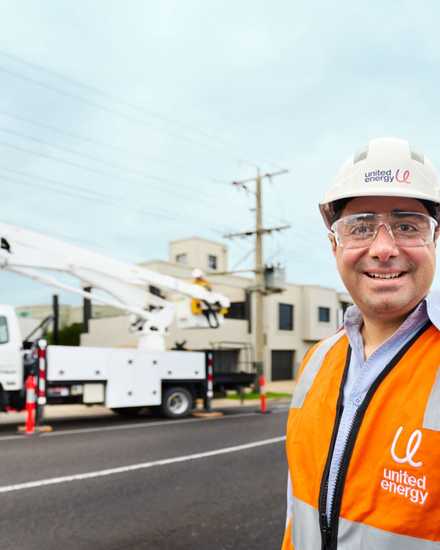Bushfire mitigation
This work focuses on managing vegetation clearances around powerlines, extensive asset inspection and maintenance programs, innovative network safety and protection systems and helping customers manage privately owned overhead electric lines.
We use state-of-the-art technology to continually improve the way we can identify and manage any fire risk and conduct regular consultation with customers and stakeholders regarding their expectations about bushfire mitigation. We also use a fire risk model developed by the CSIRO to help us plan for bushfires at any point on our network.
The aim is to mitigate the likelihood of community damage caused by fire started by our assets.
Under our Bushfire Mitigation Plan, we manage assets and risks that could cause fires due to:
- surface contamination of insulators combined with moisture resulting in electrical tracking and potentially leading to pole or cross arm fires.
- failure or malfunction of network devices such as surge arresters and expulsion drop out fuses.
- contact between vegetation and the electricity network.
- bird or animal or third-party contact with electricity assets.
- failure of line hardware (electrical and mechanical).
- conductor failures.
Natural disasters such as bushfires, floods or extreme weather events may also trigger one or many of these causes of ignition risk.
REFCLs and bushfire prevention
In 2009, we were the first in the world to use the Rapid Earth Fault Current Limiter (REFCL) system to reduce the likelihood of powerline-related bushfires. Since that trial we have installed REFCLs at zone substations in Mornington, Dromana and Frankston.
Each year, we’ve gathered evidence that shows REFCLs help keep communities safer by activating when faults occur.
Trees falling onto powerlines are the primary cause of faults. But there are other important safety benefits. For example, when heavy machinery – like excavators or bulldozers – has hit overhead powerlines while working, REFCLs have activated, protecting the operators.
While the introduction of REFCLs was mandated in some other parts of Victoria as part of the Government’s response to the 2009 Victorian Bushfires Royal Commission, we’ve voluntarily supported the initiative in the interests of community safety.
How REFCLs work
When a powerline comes into contact with the ground or a tree, the energy released can cause a large spark. The line can continue sparking if it remains live, increasing the potential of it starting a fire.
A REFCL works like a large safety switch. It can detect when one line out of a three-phase powerline has fallen to the ground – almost instantly reducing the voltage of the fallen line. At the same time, it boosts the voltage on the two lines that remain in service.
After a few moments, the device checks to see if the fault is still present. If it is temporary, then power is restored to the line. If it is a continuing fault, power to all three lines will be shut off to protect against the risk of fire, keeping the lines safe for our crews to fix.
While the safety devices are effective all year round, on Total Fire Ban days they operate at heightened fault sensitivity. Crews patrol the line after a REFCL triggers, working to determine the cause of a fault and making sure things are safe before switching power back on.
Network maintenance

Network planning


